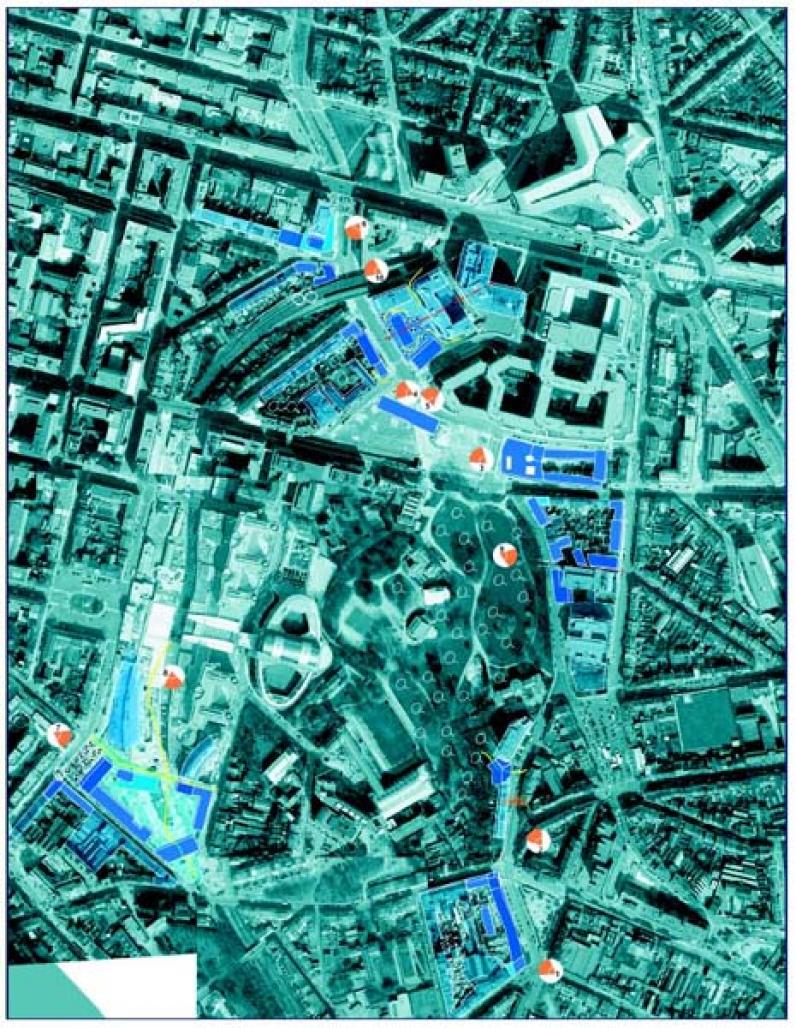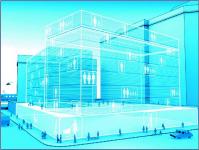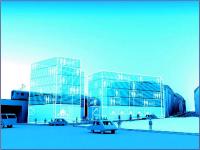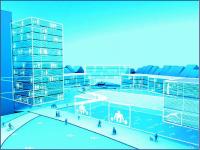The urban project for the European quarter of Brussels, commissioned by the Prime Minister’s Office and the Cabinet of the Minister-President of the Brussels-Capital Region, sets out to develop an overall urbanistic concept for the district that will strike a balance between the different functions and actors established in the area. The diversity of uses and activities is seen as a mechanism to strengthen integration with the remaining territory of a district that is almost given over to European institutions.
This urban project is, then, neither a planning figure to reformulate the basic parameters of land use, nor an isolated architecture project seeking a definitive image for the enclave. It is an action programme that identifies the themes of reflection and puts forward specific actions for the introduction of an overall urbanistic concept.
The European quarter is, today, a territory of paradox. Though it is recognised as a major challenge for the Brussels region, there is no overview that addresses it in its entirety. Despite the forceful presence of important European institutions, its overall image registers a very low value. It is overburdened with communications networks but lacking in spatial links between its different parts. It has green spaces of considerable size that are difficult to access due to infrastructural or morphological obstacles. It attracts large numbers of European citizens but has few symbolic spaces with which they can identify. Finally, despite having local heritage-rich amenities, it does not make the most of their potential.
It is a fragmented territory as regards both its spatial logic and the decision-making levels operating on it, in which the Maalbeek valley constitutes a line separating Luxembourg Square and Leopold Park, where the European Parliament stands, from Schuman Roundabout, with the Commission and the Council of Ministers. It is an isolated district, which partakes little in the spatial and functional structure that characterized the city’s urban dynamic; where the limits of infrastructure, morphology and topography define independent elements that establish an interrelation of contraposition. And it is a territory that contains within it two clear sub-territories: the Leopold district, a compact urban fabric organized around a grid system, and the valley, characterized by a logic of open implantation of large-scale buildings and complexes.
Given this complex situation, the central aim of the project is to enhance the European quarter by formalizing a positive identity for the valley and anchoring the quarter in the urban context of Brussels. Three principles underlie the intervention: polarity, regarded as a multiplication of centralities that underpin a new balanced network; diversity, conceived as a principle of complementarity to guarantee sustainability; and intensity as a principle that allows the quarter to develop according to sensible dimensions that vary according to place and time.
This conceptual volume materializes in a spatial hypothesis that organizes both the valley and the Leopold district, and the European quarter as a whole and the outlying districts.
By means of a series of “notebooks” (Urban life, Diversity, European institutions, Public spaces, Mobility, Security), the project identifies the aspects of the quarter to be reconsidered, analyses existing problems, defines sectoral aims, suggests actions to be taken (physical, social, cultural, legal, fiscal and technical), and establishes the time line for their implementation according to priorities and the consequences that one action may have for another. A final notebook (Implementation) defines the organizational, political and technical mechanisms required to carry out the project.
2003


.jpg)





.jpg)
